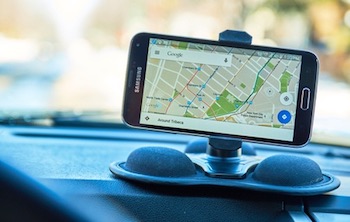 Getting around may get a little bit easier for some drivers as Google (NASDAQ:GOOGL) adds on new features to the 9.34 beta-release of Google Maps. These additions have not been released to the mainstream audience, but they are being tested as of this summer. One updated feature likely to be quite popular is text-based parking notification, which would provide information to users about parking availability at the intended destination.
Getting around may get a little bit easier for some drivers as Google (NASDAQ:GOOGL) adds on new features to the 9.34 beta-release of Google Maps. These additions have not been released to the mainstream audience, but they are being tested as of this summer. One updated feature likely to be quite popular is text-based parking notification, which would provide information to users about parking availability at the intended destination.
Text-based parking notification systems seems to be a growing trend for Google Maps. Last year developers used text messages to warn drivers about road-work along their route, now parking is being taken into consideration, though perhaps not as accurately as some would have it because Google Maps doesn’t keep track of individual parking spots. At this time, the feature advises drivers whether the parking is “easy” or “hard” probably based on how many overall parking spots there are in an area.
Another interesting addition is the “keep north up” option and its role in accidental swipes of the phone’s touchscreen while driving. Such swipes are disorienting as they cause the screen to show a spinning map and when that spinning stops the direction of the vehicle can be hard to discern. Instead of being unsure if the map is leading you in the opposite direction of the destination, the screen will orient itself with north facing forward. The phone will then act like a compass regardless of how the screen is swiped or tapped. Complemented with a re-center button, which keeps an icon of the vehicle at the center of the screen, this feature makes it easy to see the location of the vehicle in relation to the final destination. The very last thing the beta-tester must remember is to turn the feature on as this function is disenabled by default.
Some of the methods protecting the technology behind the parking notification feature can be found in U.S. Patent No. 8484151. Predicting Parking Availability protects a method that, by first predicting the population density in an area and then applying it to a parking availability model, can estimate whether parking will be easy or hard. Because the parking availability model makes use of a function that predicts parking based on population density, the computer-stored information can then relate the parking availability to the user of the technology. This transfer of information was first envisioned as a layer over the map showing parking availability according to the patent’s abstract.
More recently, Google was issued U.S. Patent No. 9360335 entitled Dynamic Rerouting During Navigation. The system protected here monitors the speed of the vehicle and makes sure that rerouting will only occur inside a certain window based on how much an alternative route will save in terms of time. If the alternative route is within the predetermined window of time saved, an interactive prompt is activated and the driver is asked whether they’d like to use the alternative route. The window itself is useful because the driver will not be overwhelmed with alternative routes unless the trip saves a substantial amount of time. The reason an alternative route may be offered could be road-work or other conditions that were not foreseen when the original route was selected.
A more convenient Google Map feature for travelers can be found in U.S. Patent No. 9247385, System and Method for Determining Visibility of Geotagged Content. The method protected here finds the location of the vehicle and also any geotagged content in the area. This content is shown to the driver as the source of that content comes into the driver’s line of sight. This is valuable for newcomers to an area who are alerted to possible destinations of interest. As the location of the vehicle changes, different information is retrieved and shown to the driver.
With the release of beta 9.34 of Google Maps, testers of the technology will chime in on what updates they need. With growing competition such as The PocketParker app, which actually taps into other phones with the same app to make an assessment of parking situations, and Parker, which uses internet-connected sensors installed in parking garages in cities like Los Angeles and Boston, the parking feature being tested as a part of Google Maps is one that is expected to make the cut.

![[IPWatchdog Logo]](https://ipwatchdog.com/wp-content/themes/IPWatchdog%20-%202023/assets/images/temp/logo-small@2x.png)

![[Advertisement]](https://ipwatchdog.com/wp-content/uploads/2024/04/Patent-Litigation-Masters-2024-sidebar-early-bird-ends-Apr-21-last-chance-700x500-1.jpg)

![[Advertisement]](https://ipwatchdog.com/wp-content/uploads/2021/12/WEBINAR-336-x-280-px.png)
![[Advertisement]](https://ipwatchdog.com/wp-content/uploads/2021/12/2021-Patent-Practice-on-Demand-recorded-Feb-2021-336-x-280.jpg)
![[Advertisement]](https://ipwatchdog.com/wp-content/uploads/2021/12/Ad-4-The-Invent-Patent-System™.png)







Join the Discussion
No comments yet.